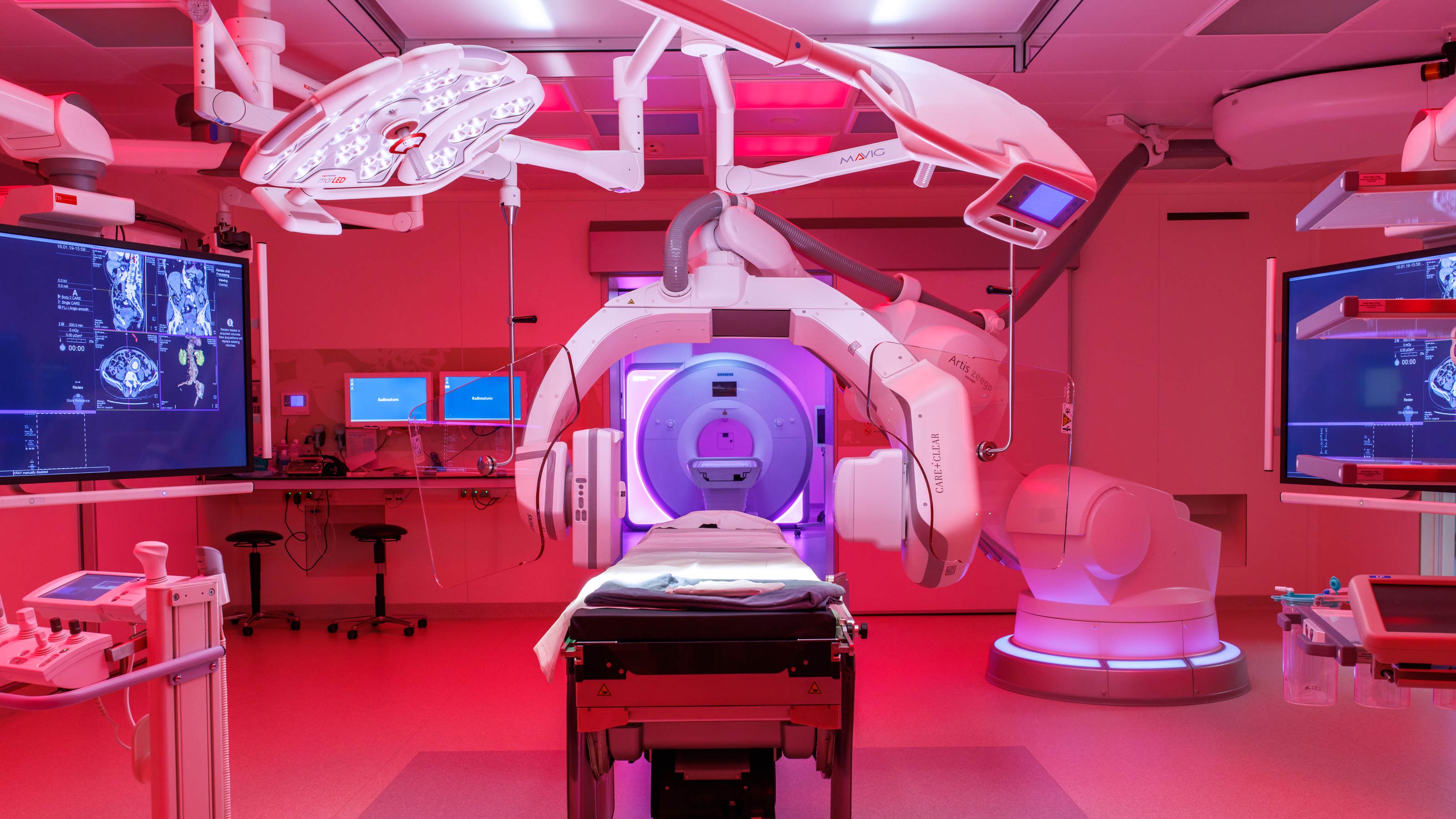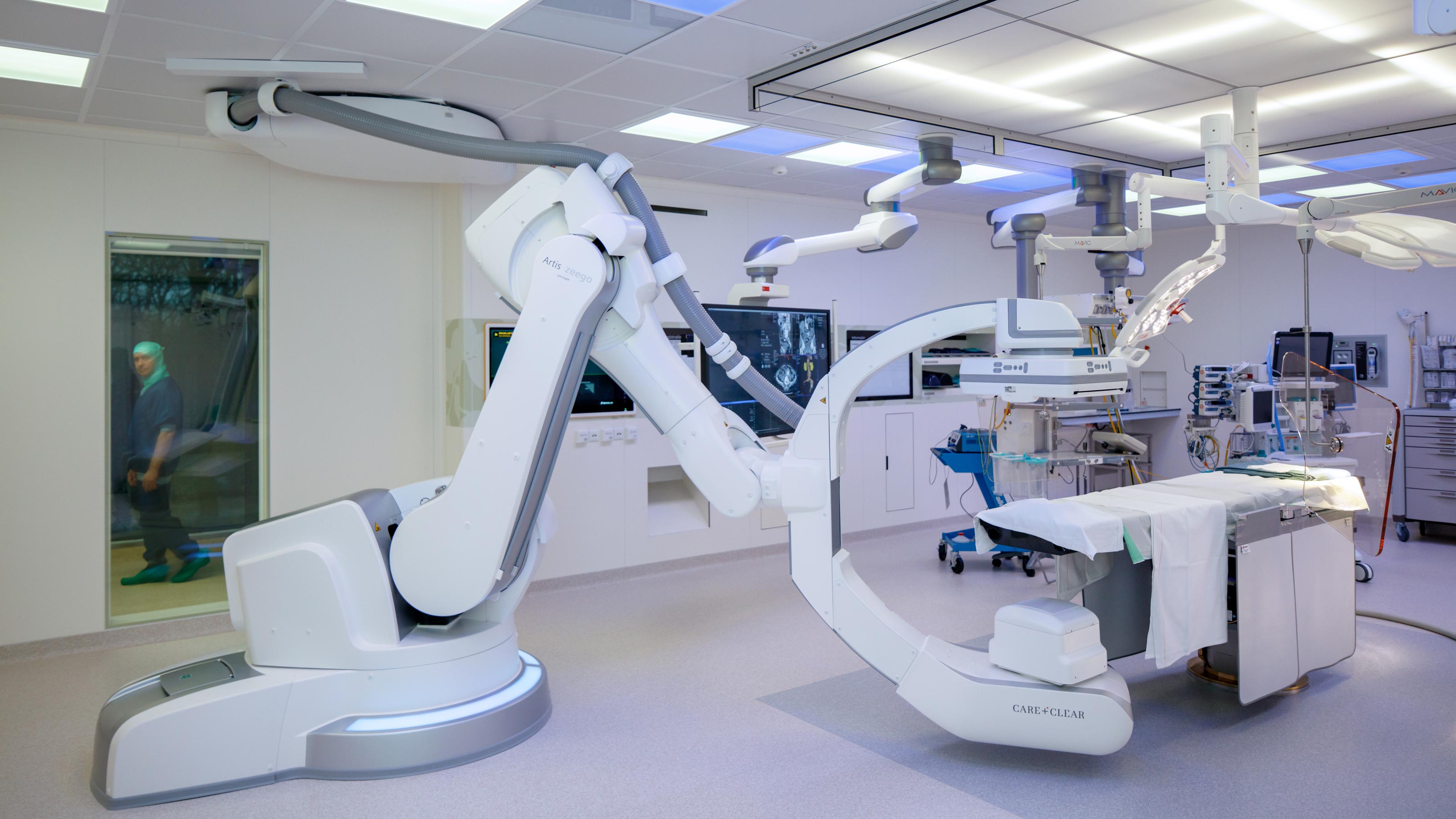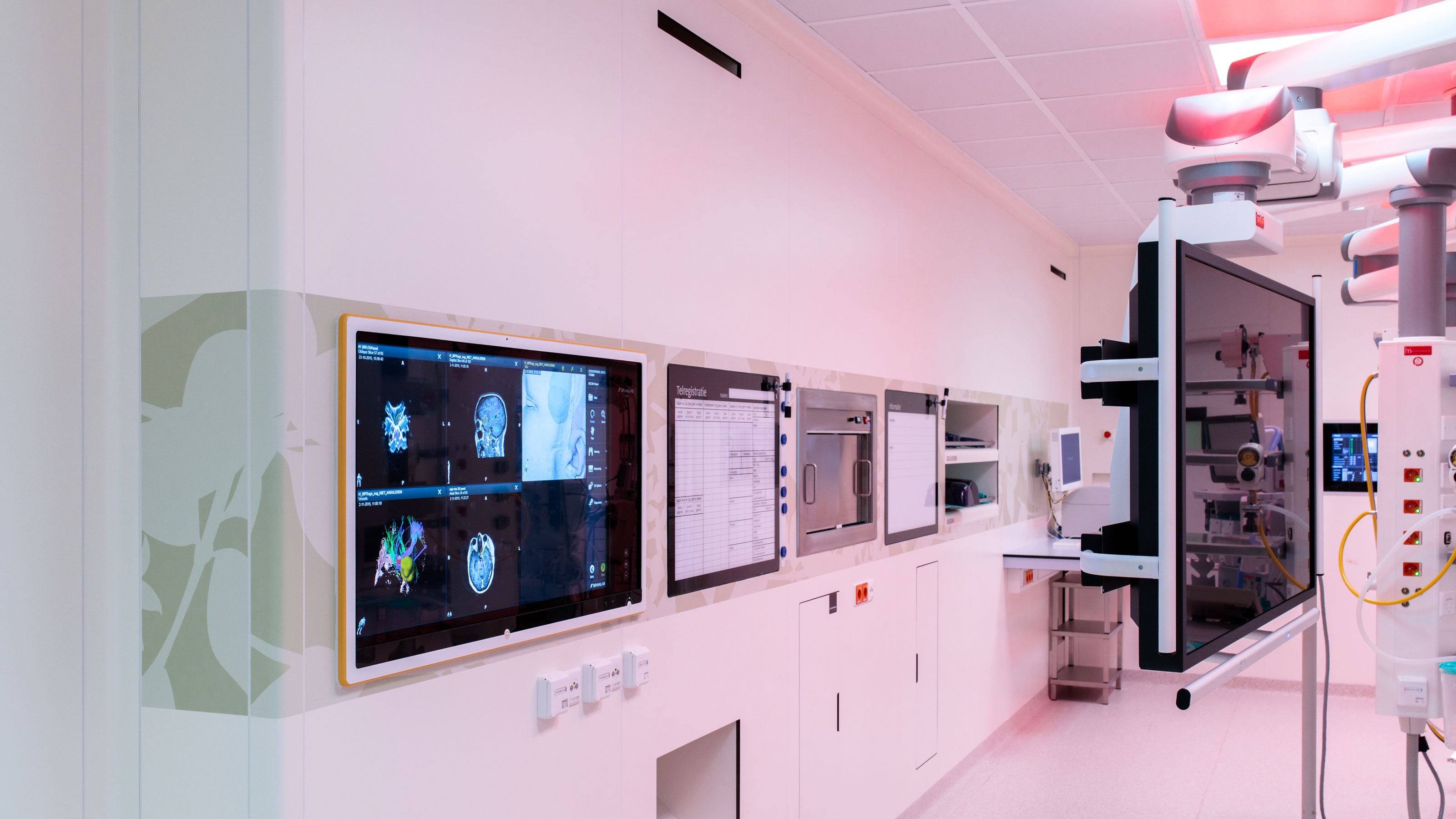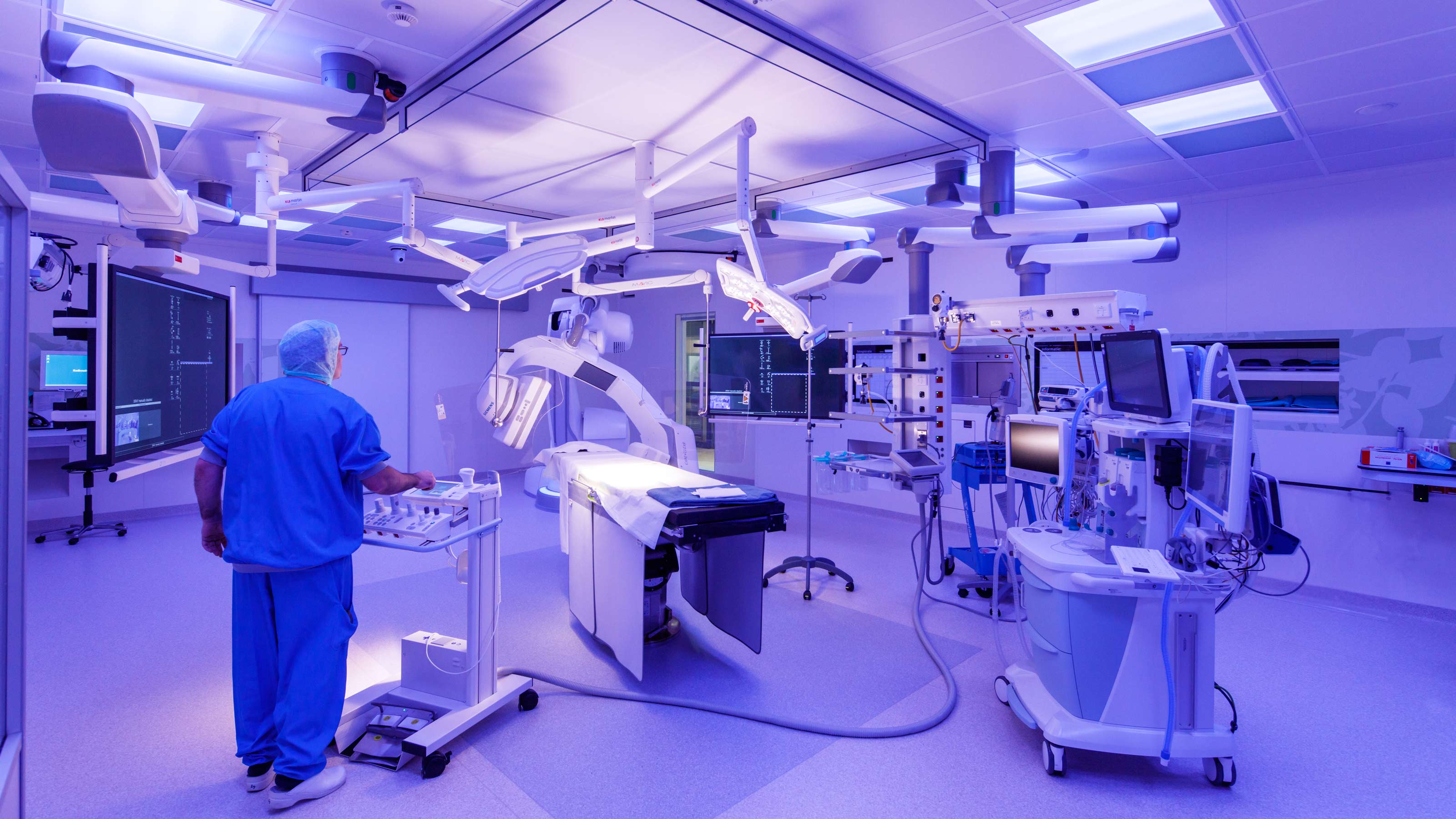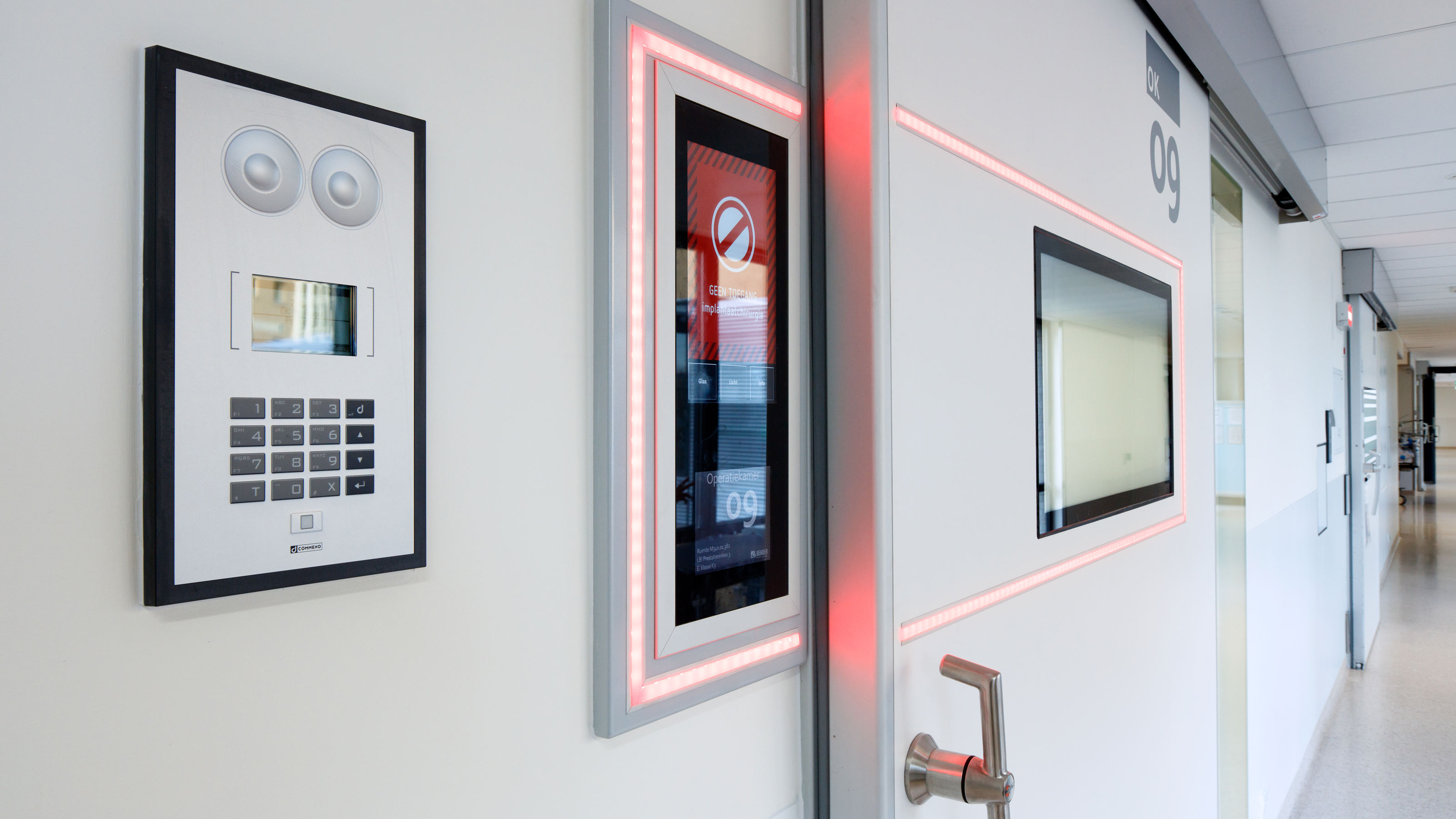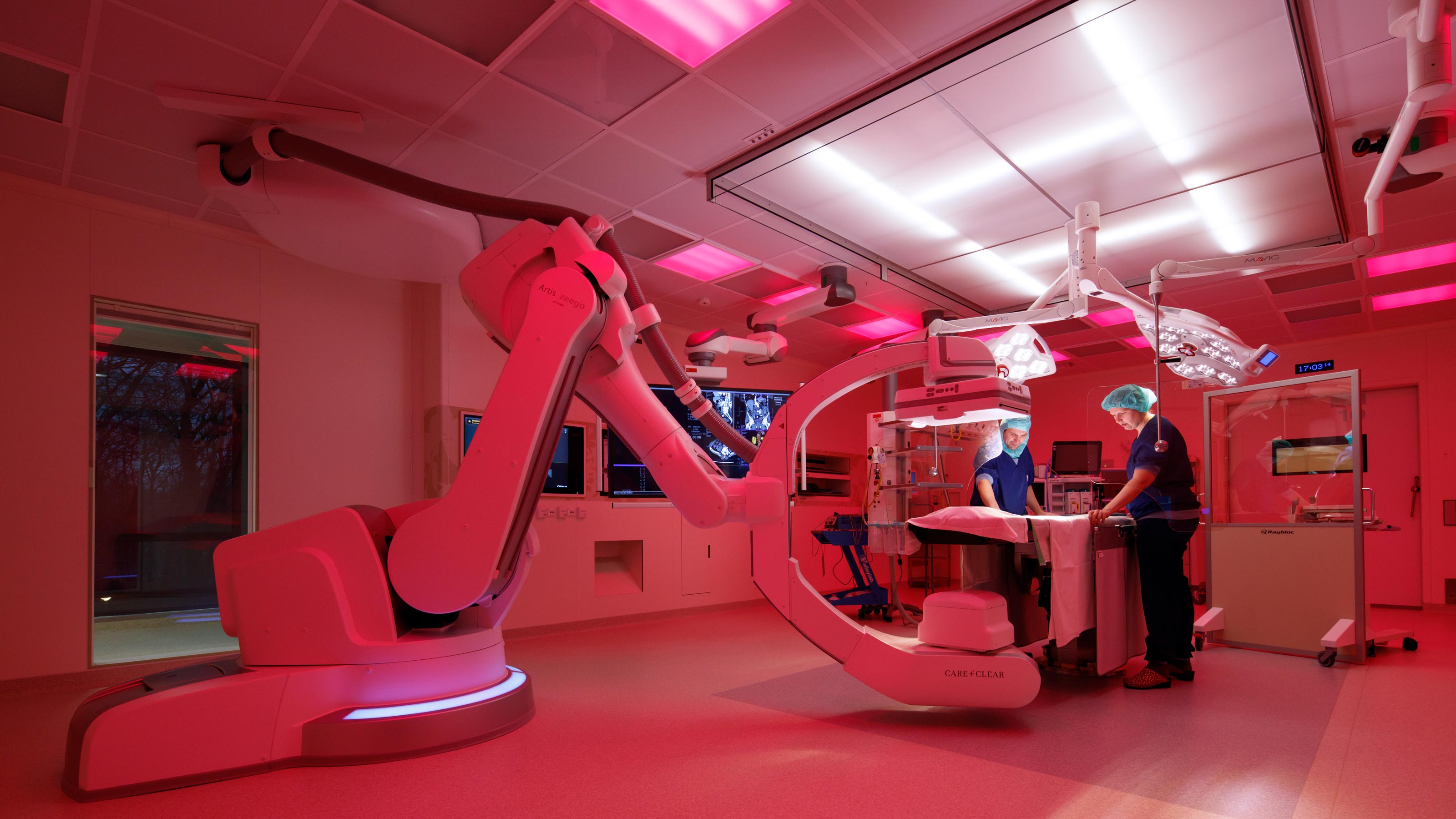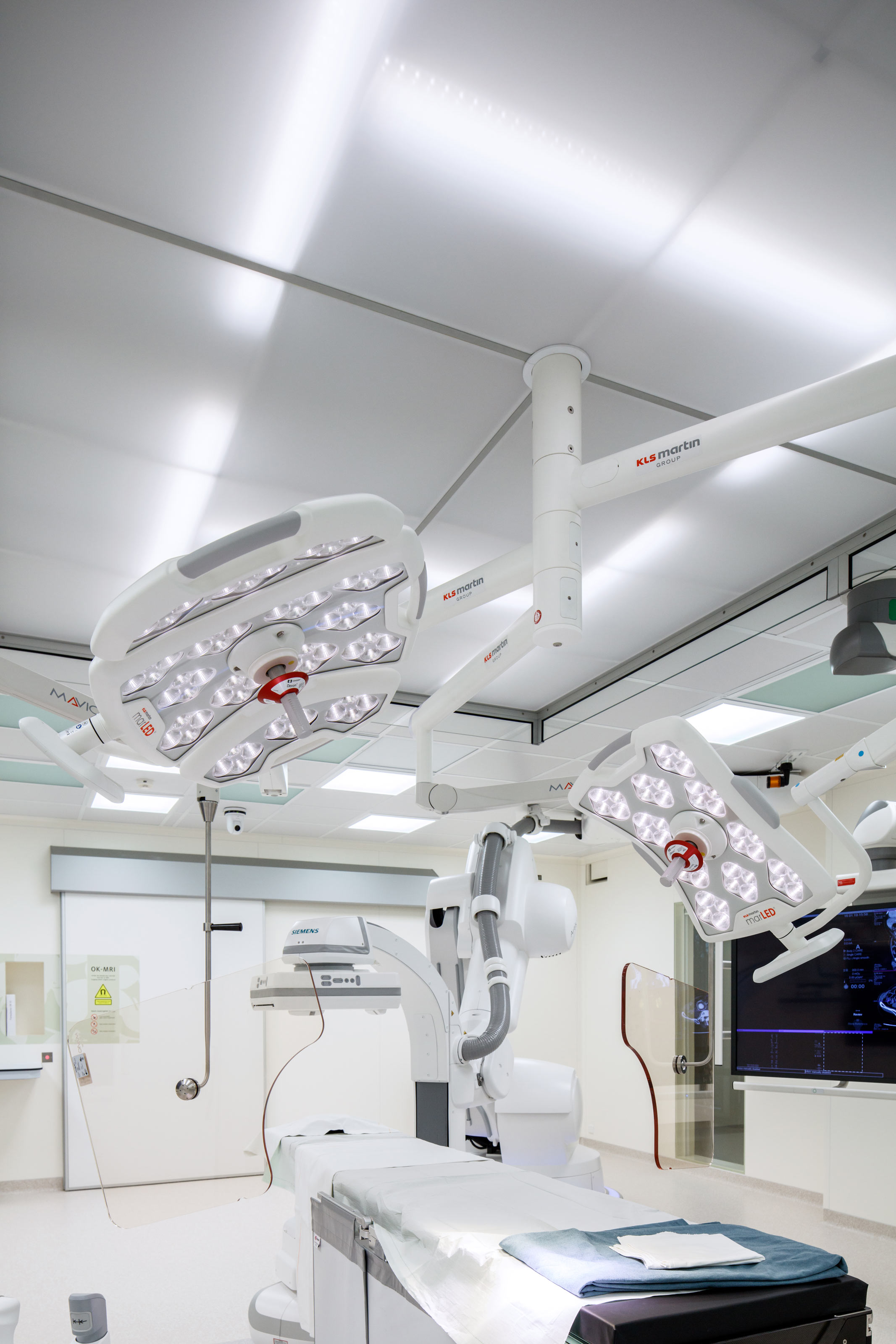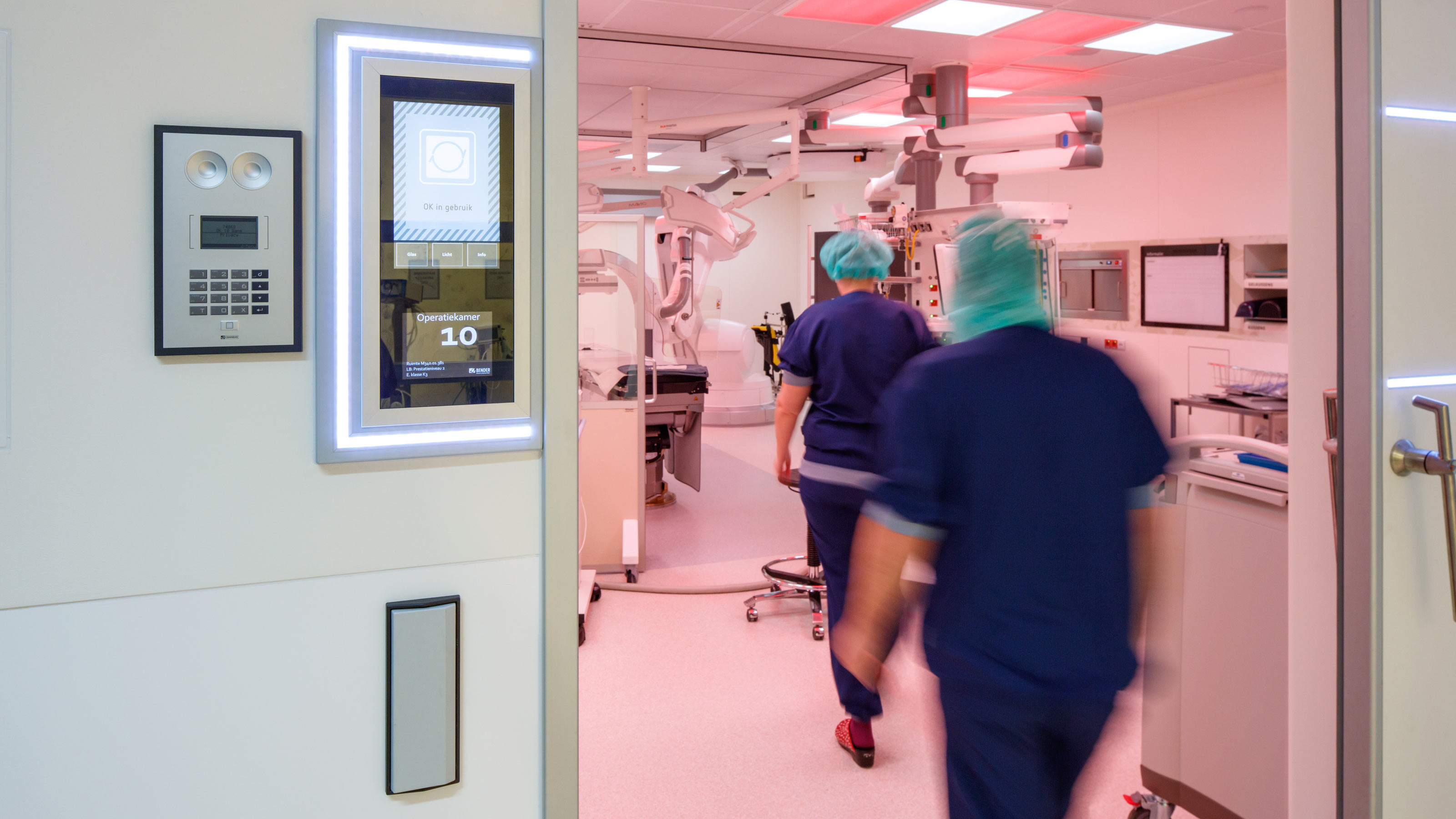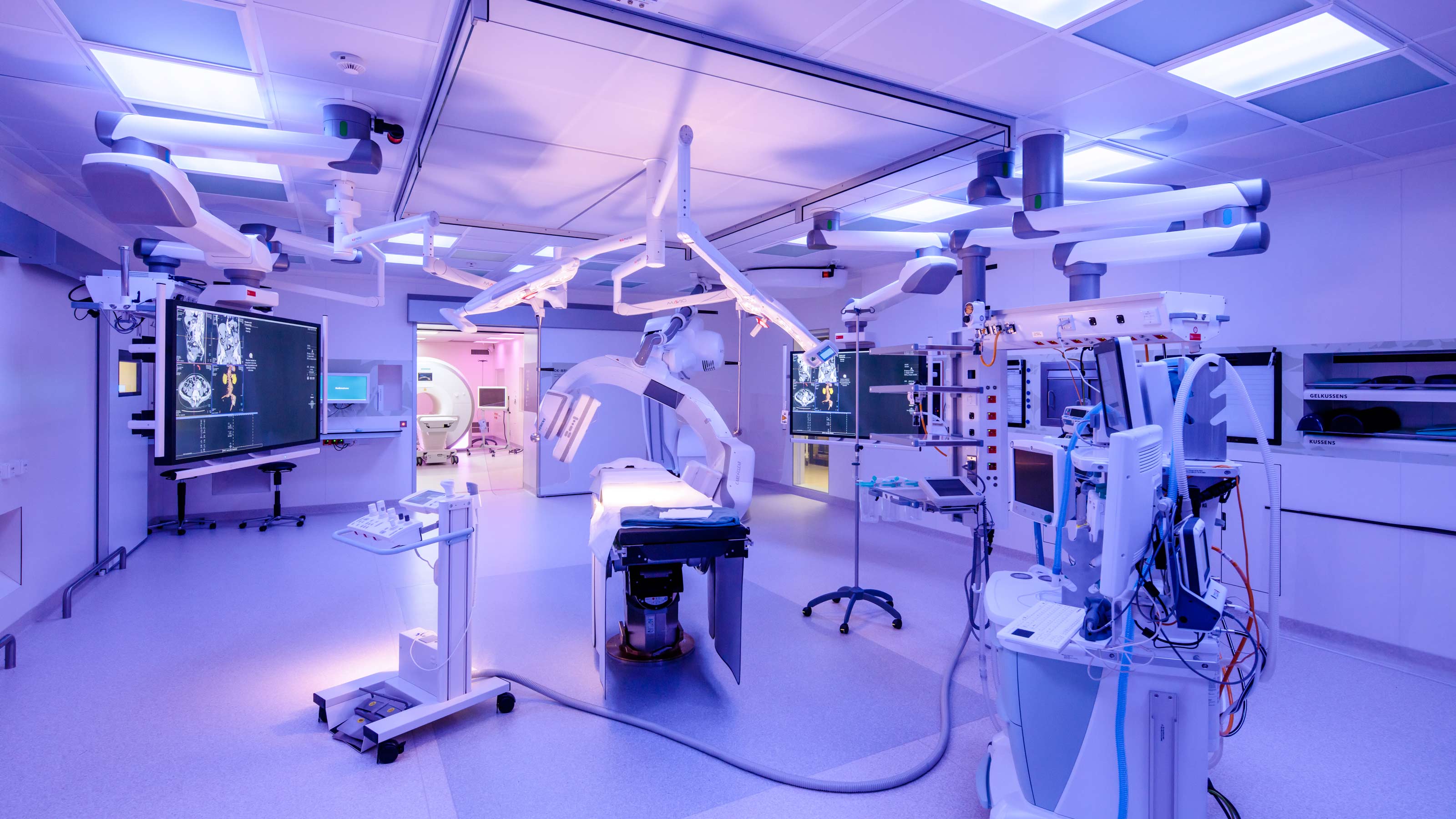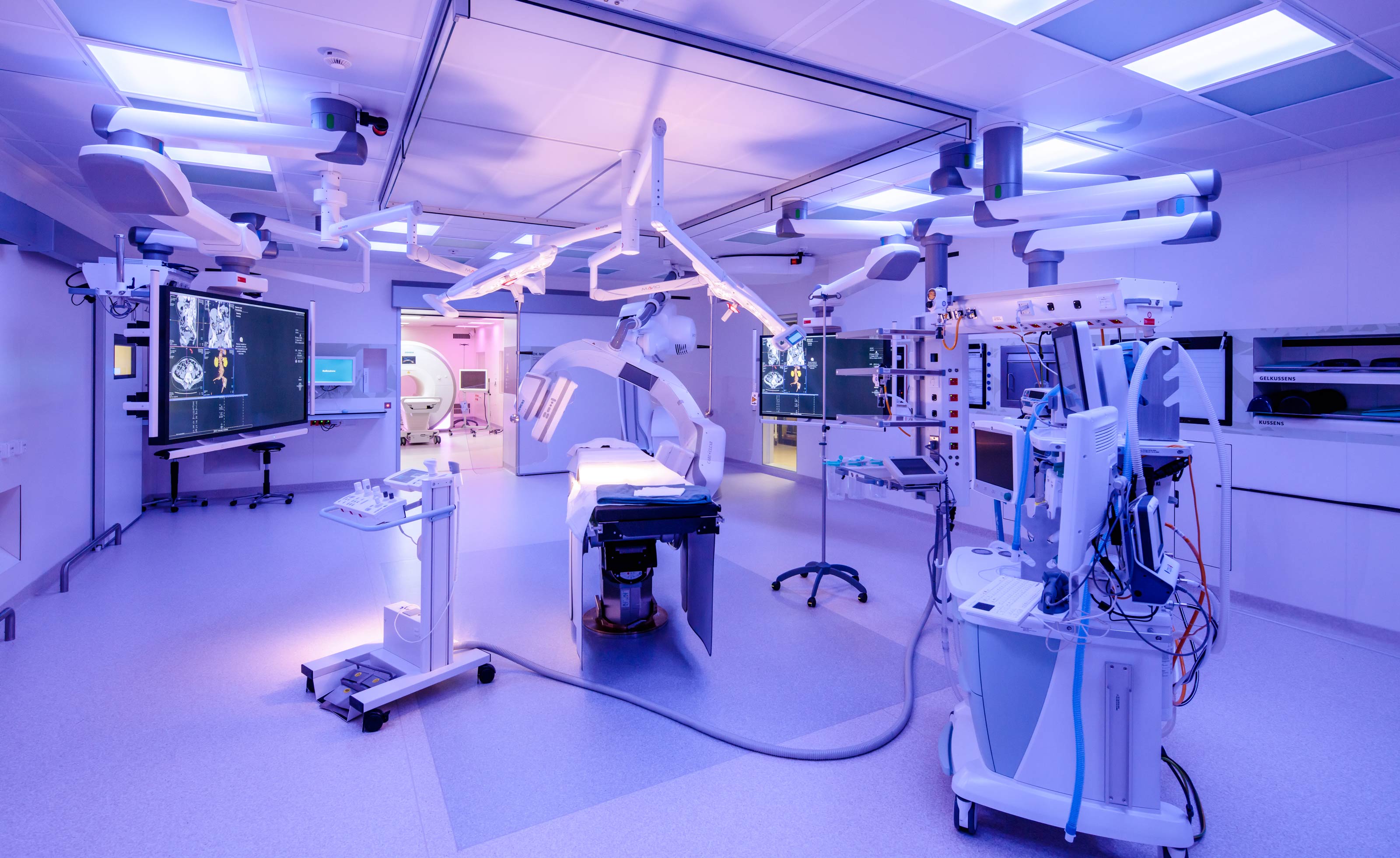
Medical Innovation Technology expert Centre (MITeC) Radboudumc
Innovative surgical centre with unique treatment and research facilities, Nijmegen
At MITeC, high-tech solutions and a healing environment come together
Real-time three-dimensional imaging during surgery – that’s the key feature of the Medical Innovation Technology expert Centre (MITeC). Here, evidence-based surgery makes a significant contribution to quality of life and advances in healthcare.
View the entire projectMITeC is the innovative highlight of the new surgical building at Radboudumc – designed by EGM – and unique in Europe. This groundbreaking surgical centre fuses cutting-edge healthcare technology with a healing environment. Thanks to intensive collaboration between client, architect and interior designer, a fully integrated and highly innovative care environment has been created.
Excellence in care
Surgeons at MITeC operate in three seamlessly connected, state-of-the-art operating theatres – equipped with permanent CT and MRI scanners, as well as medical robots. This gives them instant, real-time insight into the patient’s body during every procedure. As a result, surgeons can operate even more precisely, make quicker decisions, and work more efficiently together. For the patient, this means fewer risks, a higher chance of a successful outcome, and a faster recovery.
By connecting three operating theatres with the latest medical equipment, we are able to see even more clearly what is happening inside the body during surgery
Jurgen Fütterer, Interventional Radiologist, Radboudumc
Precisely tailored environment
MITeC’s design is attuned in every detail to the needs and working methods of surgeons and the care team. Through close cooperation and extensive testing in full-scale mock-ups, the layout, logistics and stock management have been fully optimised. This ensures smooth, efficient workflows and a pleasant, stress-free environment for both surgeon and patient.
Our approach – combining research and testing from the earliest stages of medical innovation – is what makes MITeC unique in Europe
Maroeska Rovers, Professor of Evidence Based Surgery, Radboudumc
Scientific research in minimally invasive surgery
MITeC also serves as a field lab where top medical professionals, companies, engineers and researchers jointly test medical innovations for practical usability. This enables the added value of new medical technologies to be assessed at an early stage. MITeC is used for scientific research into Minimally Invasive Surgery (MIS) – procedures performed through very small incisions – and the medical (robotic) techniques that enable them. The ultimate aim: continuous improvement in patient care.
The video below offers an insight into MITeC:
